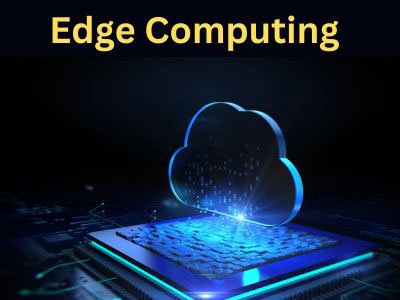Key Takeaway
Edge computing significantly reduces latency compared to traditional cloud computing by processing data closer to its source. This local processing ensures near real-time responses, which is critical for time-sensitive applications like autonomous vehicles and industrial automation. By avoiding delays caused by sending data to distant cloud servers, edge computing ensures faster decision-making.
The speed improvement varies depending on the use case but is often several times faster than cloud-based processing. This enhanced speed supports applications that demand immediate action, such as remote healthcare or gaming, where even milliseconds of delay can impact outcomes. Edge computing optimizes performance by reducing reliance on centralized servers.
Measuring Latency Improvements with Edge Computing
Latency, or the time it takes for data to travel from one point to another, is a critical factor in many real-time applications, especially in industries such as healthcare, autonomous driving, and industrial automation. In traditional cloud computing models, data is sent to centralized servers for processing, which can introduce significant delays. Edge computing, however, reduces latency by processing data locally at the edge of the network, closer to the source of the data.
By measuring latency improvements with edge computing, organizations can quantify the benefits of faster data processing. For example, in autonomous vehicles, reducing latency can mean the difference between avoiding an accident or not. Similarly, in healthcare applications, low-latency processing of patient data can result in faster diagnoses and better outcomes. Edge computing allows businesses to measure and optimize latency, ensuring that time-sensitive applications perform at their best.
As the demand for real-time data processing continues to rise, edge computing will play an increasingly important role in reducing latency and improving system performance. By leveraging edge computing, organizations can enhance the responsiveness of their applications, improve user experiences, and drive innovation across industries.

Speed Comparison Between Edge and Cloud Processing
Speed is a defining factor when comparing edge computing and cloud computing. While the cloud is excellent for large-scale data storage and complex processing, it often introduces latency due to the distance between the data source and the cloud server.
Edge computing, on the other hand, processes data locally, significantly reducing latency. For instance, an edge device on a factory floor can analyze sensor data in real-time, enabling instant adjustments to machinery. Cloud computing, in contrast, would require data to be sent to a remote server, processed, and then returned—adding precious seconds or even minutes.
However, edge computing’s speed advantage comes with its own limitations, such as constrained computational power compared to cloud servers. For applications requiring massive processing, a hybrid approach may be ideal, leveraging the strengths of both edge and cloud.
For engineers, understanding these differences is crucial. It’s about choosing the right technology for the right task. When real-time decision-making is a priority, edge computing is often the superior choice.
Factors Contributing to Faster Edge Performance
Several factors contribute to faster edge performance in IoT systems. Hardware advancements, such as more powerful processors and memory, allow edge devices to handle more complex tasks. 5G connectivity also plays a crucial role in reducing latency, enabling edge devices to communicate faster and more reliably.
Another factor is edge AI, which allows devices to perform advanced data analysis locally. With edge AI, IoT devices can process large datasets and make intelligent decisions without relying on cloud servers. These advancements are crucial for enhancing the overall performance and responsiveness of edge computing in IoT.
Real-World Examples of Edge Computing Speed Benefits
Edge computing has shown remarkable speed advantages in real-world applications across various industries. One of the most significant examples is in the field of autonomous vehicles. These vehicles generate and process a tremendous amount of data, such as sensor information, camera feeds, and real-time traffic updates. By leveraging edge computing, data can be processed on-board, allowing the vehicle to make quick decisions without relying on cloud communication, which could introduce dangerous delays.
Another example can be found in smart manufacturing. In industrial environments, real-time monitoring of equipment is essential for identifying potential failures or performance degradation. By using edge computing, manufacturers can analyze sensor data directly at the source, enabling quick responses to potential issues, improving maintenance schedules, and preventing costly downtime. In these environments, edge computing speeds up decision-making processes by reducing reliance on cloud infrastructure and ensuring near-instantaneous data analysis.
Healthcare applications also benefit from the speed of edge computing. For instance, remote monitoring devices that track vital signs such as heart rate or blood glucose levels can immediately process data on the edge, alerting healthcare providers of any concerning trends without delay. This speed is critical, especially in emergency medical situations where time is of the essence.
Addressing Limitations in Edge Performance Speeds
While edge computing offers substantial benefits, there are challenges related to the performance speeds of edge devices. The processing capabilities of edge devices may be limited compared to cloud infrastructure, which can hinder their ability to handle complex tasks.
Future developments will focus on enhancing the processing power of edge devices, incorporating more advanced hardware and edge-optimized algorithms that can handle more data and perform complex analytics locally. 5G networks will also play a role in improving edge performance speeds by enabling faster data transfer and reducing latency, which is critical for applications that require immediate responses.
Conclusion
In conclusion, edge computing is significantly faster than traditional cloud computing for tasks that require low-latency processing. By processing data closer to the source, edge computing reduces the need for data to travel long distances to centralized servers, resulting in quicker response times.
For time-sensitive applications, such as autonomous vehicles and industrial automation, this speed advantage is crucial. As edge computing technology continues to improve, its speed and efficiency will continue to outperform cloud computing for specific real-time applications.
